Best Shoes for Juvenile Idiopathic Arthritis – Supportive Outsole, Firm Heel Counter, and Extra Depth!
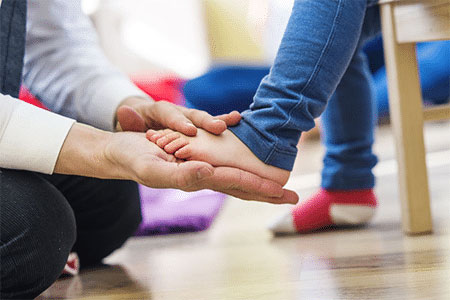
Has your child been diagnosed with juvenile idiopathic arthritis? Children with JIA experience foot problems such as inflammation, limitation of motion, and abnormal alignment. Other common foot problems seen in children with JIA are excessive pronation and bunions. I am going to show you a list of supportive shoes that are lightweight and flexible and provide extra depth with round toe-boxes to prevent bunions and other foot issues.
Be Careful About the Shoes You Buy for Your Child
The wrong shoe worn by a child with JIA can exacerbate existing problems and cause damage and complications to many joints beyond the feet, such as the hips and knees. I want parents to know that some children with JIA grow out of it after they get treatment while others will need ongoing treatment as adults.

The Importance of Being Proactive and Not Taking the “Wait and See Approach”
I always recommend parents to be proactive and don’t take the “wait and see approach” when it comes to treating their children’s foot conditions, as waiting for the condition to resolve on its own might only lead to the condition getting worse. Parents should start thinking of their kids’ shoes as a factor that helps minimize pain and maximize their ability to get out and do things.
Are Your Child’s Feet Pronated?
Children with JIA also experience a large number of gait abnormalities. When joints swell, the soft tissues around the joints can stretch into poor positions – particularly in joints that take body weight such as the feet. These positions may not correct when the swelling resolves. For example, swelling around the rearfoot joints might take a normally arched foot into a flatfooted position.
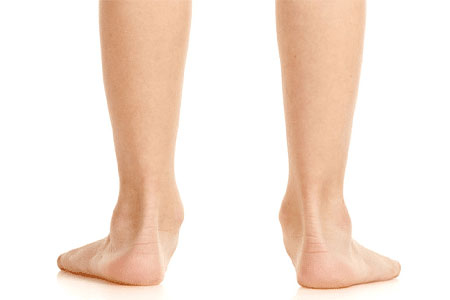
Once the feet are pronated, the knees and hips also become misaligned. This means the muscles that move those joints no longer work efficiently, and it will take more energy for your child to do the same work as other children who don’t have this condition.
What a Difference the Correct Pair of Shoes Can Make!
JIA can affect your child’s walking gait and overall posture but the good news is certain shoes can help treat JIA and improve your child’s foot posture and walking gait. Don’t take my word for it, let me prove it to you!
Let’s take a look at an image of a flat-footed child standing barefoot. Do you notice how the feet are collapsing and turning inwards? This is going to make your child’s feet, knees, legs, and hips become misaligned.
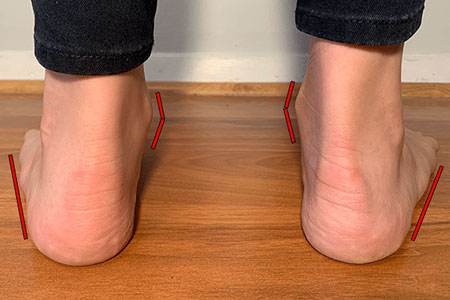
Now let’s take a look at what happens when we fit that same child in a pair of one of the supportive shoes I recommend. Do you notice how the shoes are preventing the feet from collapsing and turning inwards? This is going to allow your child to walk and run straighter, which is going to help improve your child’s overall posture.
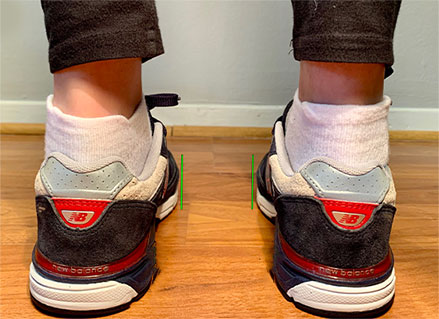
Something so simple as providing your child with the correct type of shoes can help treat juvenile idiopathic arthritis.
Key Shoe Features for Kids with Juvenile Idiopathic Arthritis
1️⃣ Extra Depth: This feature is going to accommodate your child’s foot swelling by allowing your child’s feet to fit deeply inside the shoes. This feature is going to prevent your child’s instep from rubbing against the top part of the shoes. Below you can visualize the difference in depth between one of the shoes I recommend a different style:
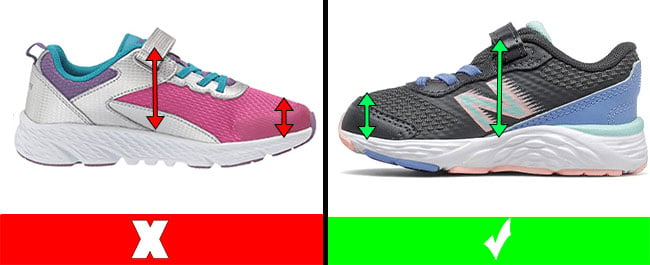
2️⃣ Substantial Outsoles: The shoes I recommend provide a substantial outsole that is going to help prevent your child’s feet from collapsing and turning inwards. Shoes that provide substantial outsoles also help prevent the impact that the child’s feet take when they come in contact with the ground. Let me show you the difference in support between one of the shoes I recommend a different pair of sneakers:
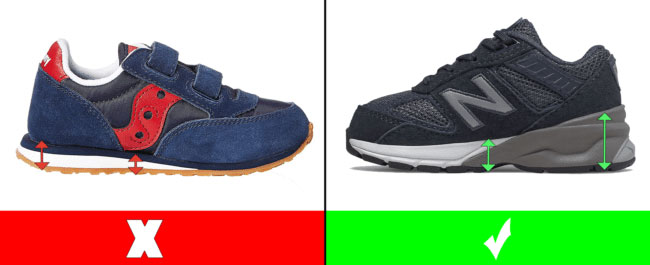
3️⃣ Firm Heel Counters: Shoes with firm heel counters provide good ankle and heel support. The heel counter should be strong when squeezed in your hand and should not easily collapse. Let me show you the difference in heel support between one of the shoes I recommend and a different style:

Without further ado, let’s take a look at the best shoes for juvenile idiopathic arthritis. Disclosure: Some links in this post may be affiliate links and we may receive a small commission (at no extra cost to you) when you click our links and make purchases.
Best Shoes for Juvenile Idiopathic Arthritis to Prevent Pain
The shoes I recommend are not orthopedic shoes, they are everyday sneakers that simply provide better support than the rest. You will also notice that the shoes are available in medium (M), wide (W), and extra wide (XW) widths. Consider getting a wider shoe width than your child normally wears to accommodate your child’s foot swelling.
To summarize, the shoes I recommend provide the following features:
- Substantial outsoles to prevent the feet from collapsing and turning inwards.
- Strong and firm heel counters to support the heels.
- Room for the toes to lie flat.
- Flexible sole to allow the foot to rock from heel-contact to toe-off.
- Most of the shoes also come with shoelaces instead of velcro closure as shoelaces provide better support and stability than any other type of shoe closure.
Get a Personalized Shoe Recommendation
If none of these shoes are available in your child’s shoe size or you are unsure about what shoe might work best for your child’s feet I suggest that you contact me via email:
fittingchildrensshoes@gmail.com
Getting the Correct Shoe Size – Why it’s Really Important for Kids with JIA
Instead of buying larger shoes to accommodate your child’s foot inflammation, I recommend that you buy them wider and deeper instead.
I created a virtual shoe fitting service that will help you retrieve your child’s shoe size from home. In that resource I help parents determine their child’s exact foot size and whether the child has narrow, medium, wide, or extra wide feet. I also help parents determine whether their child has a high instep or not.
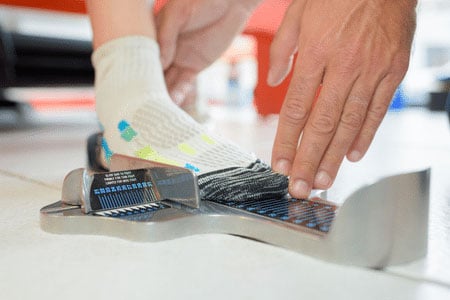
Does Your Child Have a Leg Length Discrepancy?
I noticed how some children with JIA have one leg that is shorter than the other. Usually, this is a minor issue and does not require any treatment. However, when the leg discrepancy is quite significant, a shoe or heel lift may be prescribed.
Proper footwear is key to supporting the joints and body. However, there are going to be certain cases in which children will have to wear an orthotic inside of their shoes for extra support. Orthotics are extremely effective when it comes to improving the foot position and function by altering the position of the foot, heel and leg.
Orthotics for Juvenile Idiopathic Arthritis
Orthotics are used when a child is experiencing foot pain, when regular swelling occurs in the foot joints, or when the foot function is considered to likely cause long-term problems.
I have seen several cases of children who wore orthotics with shock-absorbing capabilities that experienced significantly greater improvement in pain and function. The issue is that custom orthotics can range anywhere from $250 to $350, and you need to consider that your child might outgrow the orthotic every 6 months.
I have found one over-the-counter orthotic that is affordable and has been extremely effective in preventing foot pain and improving foot function. This orthotic has proven to be as beneficial as custom-made ones.
The main reason why I recommend this orthotic is that it provides excellent arch and heel support, and at the same time is not as invasive as other orthotics. This means that this orthotic allows the child’s foot and leg muscles to develop on their own while supporting them.
Exercise and physical therapy can also help keep your child’s muscles flexible and strong.
Don’t hesitate to contact me if you are having trouble finding a different pair of shoes for your child with juvenile idiopathic arthritis. If you have a child with this condition please share your experience in the comments section below, so other families can benefit from your experiences.
